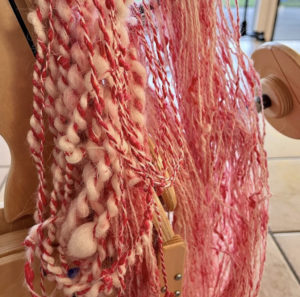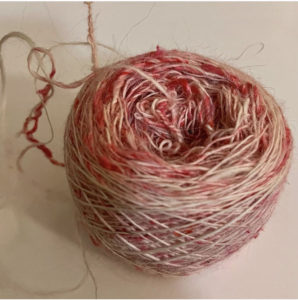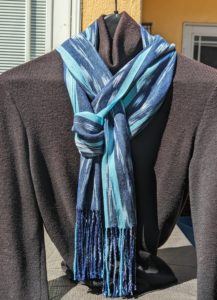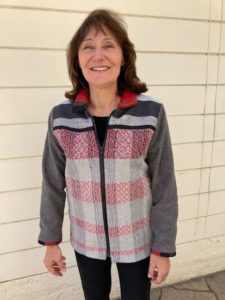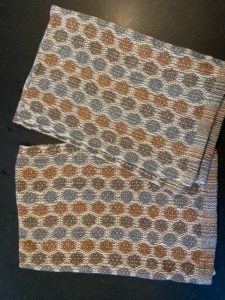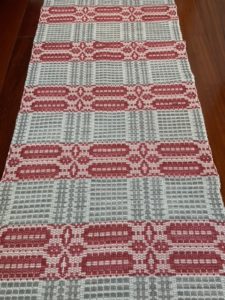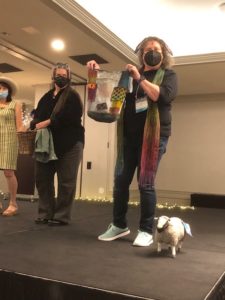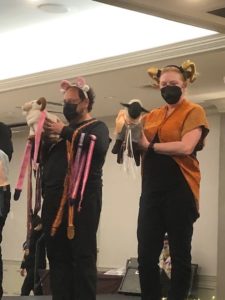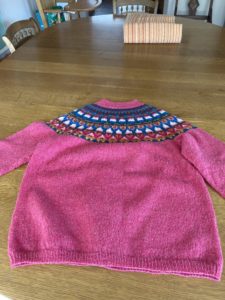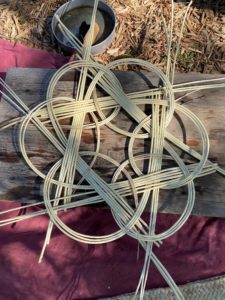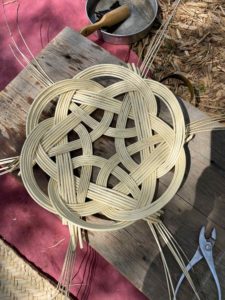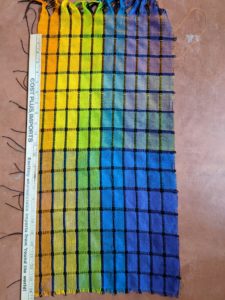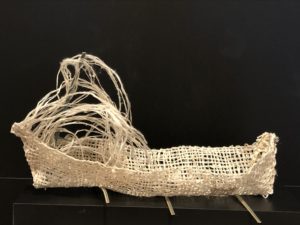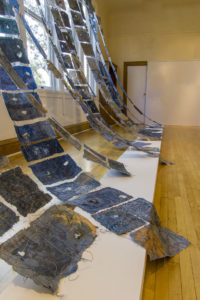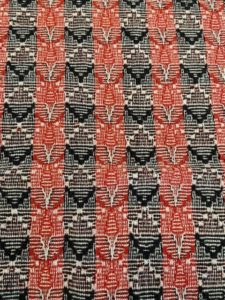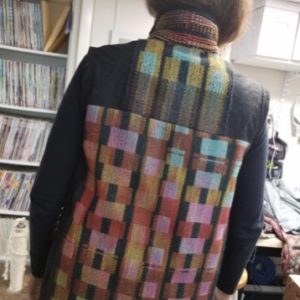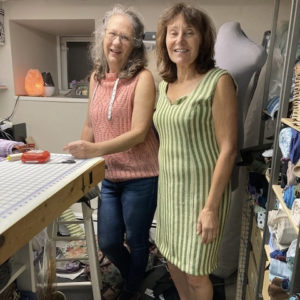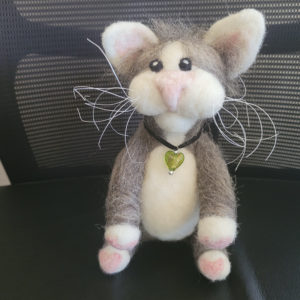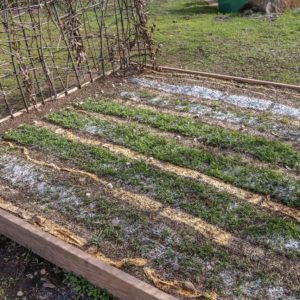Ann M:
The red/yellow shawl is 30/2 silk from Redfish Dyeworks. The draft is from Shalp’s Eight Shafts: A Place to Begin. The treadling is my own adaptation. It’s for a friend’s wedding next month. Finished dimensions: 18×72
The blue/zephyr is tabby and of my own design — really it was an itch of an idea that had to be scratched so I pulled out a long abandoned warp that’s been hanging on the back of the coat closet. I added a 1″ red ribbon down the center. It turned out a whole lot better than I imagined. Finished dimensions: 20×66.
******************************************************************************************
Sarah A:
Lift a Finger, 2022. Merino, polwarth, bamboo, silk, nylon, angelina, cotton, polymer clay. 7.75”x8.75” This piece was donated to @artiststakeaction and auctioned to support the people of Ukraine.
******************************************************************************************
Betsy B:
Knit sweater.
******************************************************************************************
Allison K:
Ikat projects.
******************************************************************************************
Barbara S:
Never Again is Now.
Never again, never again! Each time there is a horrible war, we repeat this phrase. The phrase Never Again was used after World War II at the time of the creation of the State of Israel. Never again would the Jews of the diaspora have nowhere to go when their very existence on the earth was threatened. Now it is the Ukrainians who are forced to leave their homeland under the threat of the extinction of their country and their culture. You see them fleeing with a single bag of belongings, and fortunately being welcomed by strangers. The horrors they fled are reflected in the singed contents of my bag. Hope is expressed in patching and mending, reflective of families that will hopefully someday be reunited and cities rebuilt.
Completed several weeks before, but unnamed until Russia attacked Ukraine. Never Again is Now is the 6th in my Horn Bag series.
Materials: Hemp cloth, Kozo fiber inserts and woven kozo patch, indigo dye and sumi Ink. Plaiting, stitching, assemblage.
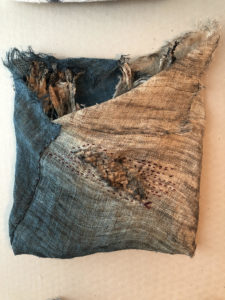
I just finished off the second assemblage of card woven bands in a work called Family Choir. Family Choir is a companion piece to The Elders completed in 2021. Watching people sing from their balconies during the pandemic inspired me. I finally decided to use the vertical openings I could create to make mouths for this ensemble of people swaying as they sang together. They seemed to form a family unit and that gave me a title.
The bands are woven of my own space-dyed pima cotton and woven in the so-called “Egyptian diagonal” technique. The feet were tinted blue in indigo long after weaving and cutting the bands. Like The Elders, this work is framed in a black picture box frame, but I photographed it without the box and glass. Dimensions are 12 x 16 framed.

******************************************************************************************
Terry E:
Tatza, a traditional Polish bread basket pattern. I wove this basket in Charlie Kennard’s workshop using peeled willow grown and processed by Mr. Kennard.
******************************************************************************************
Stefanie S:
My latest project, an exploration of Summer & Winter. 8/2 cotton at 24 EPI. White warp and 3 different shades of color in the weft, one being a 16/2 tabby shot.

